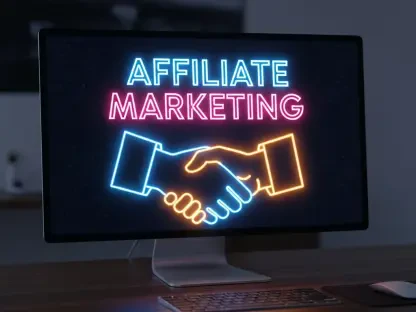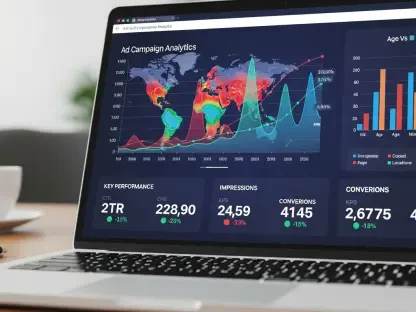Anastasia Braitsik, a renowned figure in SEO and digital marketing, has been at the forefront of innovations in programmatic advertising. With the advertising landscape shifting towards ID-less solutions, she provides invaluable insights into the revolutionary changes transforming this industry.
Can you explain what incrementality in advertising means and why it is significant in today’s programmatic landscape?
Incrementality in advertising refers to the additional value that a campaign contributes beyond what would have occurred without the campaign’s influence. In the current landscape, this concept holds immense importance because it shifts the focus from merely serving ads to ensuring those ads generate distinct, measurable outcomes. As user data becomes scarcer, understanding the true incremental impact of ads empowers marketers to optimize their strategies and allocate resources towards initiatives that genuinely drive results.
How does Anonymised’s ID-less ads and audience data platform help convert discarded impressions into usable inventory?
Anonymised’s platform takes what was once considered waste – impressions lacking user IDs – and transforms them into viable, targetable inventory. By implementing advanced technology, it identifies these discarded impressions and uses proprietary signals to make them accessible through specialized bidding. This conversion process not only unearths valuable opportunities but also leverages inventory that would otherwise remain untapped in the traditional programmatic ecosystem.
What are the primary reasons that 60% of programmatic impressions globally do not have matched user IDs?
The lack of matched user IDs can be attributed to various factors, including increased privacy measures and the deprecation of third-party cookies. Many devices and browsers now block the tracking codes that enable IDs, leaving a substantial portion of impressions without identifiers. As a result, much valuable inventory goes unutilized because it cannot be tracked or measured using conventional methods.
How does the absence of user IDs impact the cost and availability of programmatic advertising inventory?
When user IDs are missing, the scarcity of targetable impressions drives up competition. As demand concentrates on the limited 40% of inventory with IDs, bid density increases, leading to higher costs per impression. This not only inflates average CPMs but also limits availability, forcing advertisers to compete intensely for a shrinking pool of audience reach, impacting overall campaign efficiency and cost-effectiveness.
Can you describe the technology Anonymised has developed to target and measure ‘unusable’ inventory?
Anonymised has crafted a robust technology suite designed to convert ‘unusable’ inventory into a valuable resource. By leveraging on-device AI, the platform aggregates cross-domain data to create stable audiences without relying on traditional identifiers like cookies. It also employs cohort-based attribution and geo-based incrementality measures to track and enhance the campaign’s impact, effectively turning previously disregarded impressions into actionable insights.
What are the three main pillars of your ID-less technology approach, and how do they work together?
The ID-less approach rests on three foundational pillars. First, on-device AI aggregates cross-domain data to build audiences without needing cookies. Second, measurement technologies offer cohort-based attribution and geo-based incrementality to assess performance beyond conventional metrics. Finally, custom bidding algorithms shape traffic and optimize conversions using ID-less data, ensuring advertisers achieve desired outcomes even with non-traditional targeting.
How does Anonymised’s use of on-device AI differ from traditional cookie or ID-based targeting methods?
On-device AI operates independently of cookies, instead relying on data collected directly from user interactions across domains. This non-invasive technique respects user privacy while constructing stable audience profiles based on behavioral patterns. Unlike traditional methods dependent on third-party cookies, on-device AI ensures targeting accuracy without sacrificing the consumer’s privacy preferences.
Can you provide more details on the cohort-based and geo-based measurement technologies you use?
Cohort-based measurement groups users with similar behaviors, allowing marketers to monitor and assess the collective impact of ad campaigns without individual tracking. Meanwhile, geo-based technologies focus on location data to enhance incrementality, providing insights into how regional differences affect campaign outcomes. By combining these methods, Anonymised extends measurable reach, even in a post-cookie world.
How do your custom bidding algorithms optimize campaigns for advertisers?
Our custom bidding algorithms are designed to leverage the newly discovered potential of ID-less impressions. They analyze conversion data to make real-time decisions, optimizing bids based on cohort or geo-based information rather than individual identifiers. This approach not only refines targeting precision but also aligns ad spend with performance goals, ensuring advertisers can maximize impact and efficiency across campaigns.
Could you elaborate on the partnerships with SSPs like Index Exchange and OpenX? What role do they play in your strategy?
Partnerships with leading SSPs such as Index Exchange and OpenX are crucial for expanding the reach of our ID-less solutions. These collaborations enable us to integrate proprietary signals directly into bidding logs, enhancing the discoverability and usability of previously discarded inventory. By working closely with SSPs, we ensure that the transition to ID-less advertising is seamless and enriching for both publishers and advertisers.
How does treating ID-less impressions as a separate channel benefit advertisers?
By categorizing ID-less impressions as a distinct channel, advertisers can tailor bids, strategies, and measurement frameworks specifically for these impressions. This separation allows for more precise budget allocation and performance tracking, which emphasizes the unique value of ID-less campaigns. Ultimately, this approach enhances incremental reach and exploits previously uncharted inventory, boosting advertisers’ ability to engage with new audiences.
Why is it important for advertisers to set up dedicated budgets and strategies for ID-less campaigns?
Dedicated budgets and strategies for ID-less campaigns underscore the significance of treating them as standalone efforts rather than extensions of existing ones. This strategic allocation enables advertisers to tap into fresh opportunities while accurately measuring their impact. By recognizing the distinct dynamics of ID-less environments, marketers can harness the incremental reach and performance potential intrinsic to this approach.
How does the changing landscape with cookie deprecation and declining ID persistence impact your approach to incrementality?
The shift away from cookies fosters an industry-wide adaptation in tracking and measurement practices. Embracing this change, our approach pivots towards harnessing the inherent value found in ID-less advertising. By innovating around these constraints, we unlock new audience segments and refine incrementality assessment, positioning advertisers to thrive despite traditional tracking limitations.
In what ways does embracing ID-less advertising allow access to untapped inventory and new audience segments?
ID-less advertising uncovers inventory previously deemed “unusable” by sidestepping reliance on persistent identifiers. This transformation reveals high-quality impressions from top publishers, enabling advertisers to reach audiences that were effectively invisible before. Embracing this model provides a broader scope of engagement, facilitating innovative approaches to audience targeting and campaign design.
How does this shift toward ID-less inventory support premium publishers?
Transitioning to ID-less inventory provides premium publishers with fair compensation for their content ecosystems. By monetizing previously discarded impressions, publishers can generate additional revenue streams, justifying and encouraging the production of quality content. This symbiotic relationship ensures that advertisers gain access to valuable audiences, while publishers enjoy sustainable economic benefits.
Could you provide an analogy to help illustrate the concept of converting ‘unusable’ programmatic inventory into valuable opportunities?
Imagine a major department store throwing out a substantial portion of its merchandise due to minor imperfections – a tiny tear in a garment, a slightly faded color, or a mismatched size. By acquiring and correcting these imperfections, one could resell the products at full value. In programmatic advertising, ‘unusable’ inventory is discarded due to the absence of identifiers, not due to inherent quality issues. By recognizing and harnessing this potential, it’s like discovering hidden gems within a retailer’s neglected stockpile.
How do you ensure quality and relevance in ID-less impressions if they are initially considered ‘unusable’?
Quality and relevance are maintained by focusing on the audience’s contextual and behavioral data collected through on-device technologies. This enables us to construct meaningful audience segments without needing conventional identifiers. By analyzing these segments, advertisers can ensure that ID-less impressions align with campaign goals and deliver relevant messages to the right audience at the most opportune moments.
What advice would you give to advertisers who are hesitant about transitioning to ID-less advertising channels?
For advertisers concerned about transitioning to ID-less channels, I would advise approaching it with an open mind and strategic intent. Recognize that this shift presents an opportunity to innovate and unlock previously hidden inventory. By focusing on incrementality and audience insights, marketers can not only overcome limitations but also achieve greater reach and impact. Embrace change as a pathway to new growth avenues.









